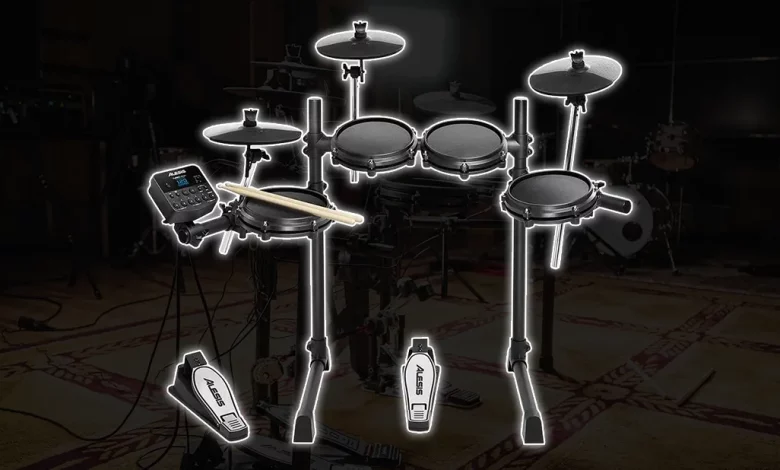
We may earn a commission from the affiliate links on this site. Learn more›
Let’s talk about the new-ish Alesis Turbo Mesh. I’ve had this e kit on my radar for a few months now and figured it’s time to share my thoughts.
Alesis has a lot of entry-level options, and by far, the Turbo Mesh is the cheapest of the lot. There’s nothing that will blow you away, and pros will scoff at the sounds and limited features.
That said, for newer drummers (kids especially), the Turbo Mesh might be the perfect option.
The Turbo Mesh is one of many kits entry-level kits available on the market. It’s affordable and has quality parts, despite its cost.
If you visit Amazon, you may notice a few electronic kits around a similar price point. The problem? They’re all utter junk.
See what I mean…
- Carlsboro CSD130 and CSD120
- Vault HD005
- Pyle Pro 9-Piece Electronic Drum Set
Just have a look at the Pyle Pro. It looks horrendous.
And don’t even get me started on those tabletop electronic drum sets. Those are terrible.
But the Alesis Turbo Mesh stands out. It’s one of the only entry-level electronic kits that is high-quality and affordable. While I do have some criticisms, for the most part, it’s an excellent choice for new drummers.
What’s In The Box
The Turbo Mesh electronic drum kit includes seven-pieces and mesh drum heads. As I’ve stated in other articles, mesh heads are now the standard on electric sets.
The hardware frame is lightweight steel and folds easily for storage. The kit goes together with relative ease and doesn’t take up a lot of space in a room.
Cables, a power supply, drum key, and sticks come included with the Turbo Mesh.
The only additional accessory you’ll need to pick up is a drum throne. No matter which kit you pick, this will be a requirement (unless you use a chair from home — not recomended).
The Pads

The snare and three tom pads are 8″ in diameter and are single zone (one sound per pad, e.g., no rim sounds).
All four pads have tunable tension rods, allowing adjustment of the head tightness. Mesh heads are often very bouncy, so bringing them down a bit can sometimes help feel more natural.
The Cymbal Pads
The included cymbal pads are all 10″ in size and are dual-zone, giving you both an edge and a bow sound. The cymbal pads aren’t impressive but do get the job done for a kit in this range.
Included Pedals
To bring the cost down, the Turbo Mesh doesn’t include a kick tower. It instead contains an electronic foot pedal controller.
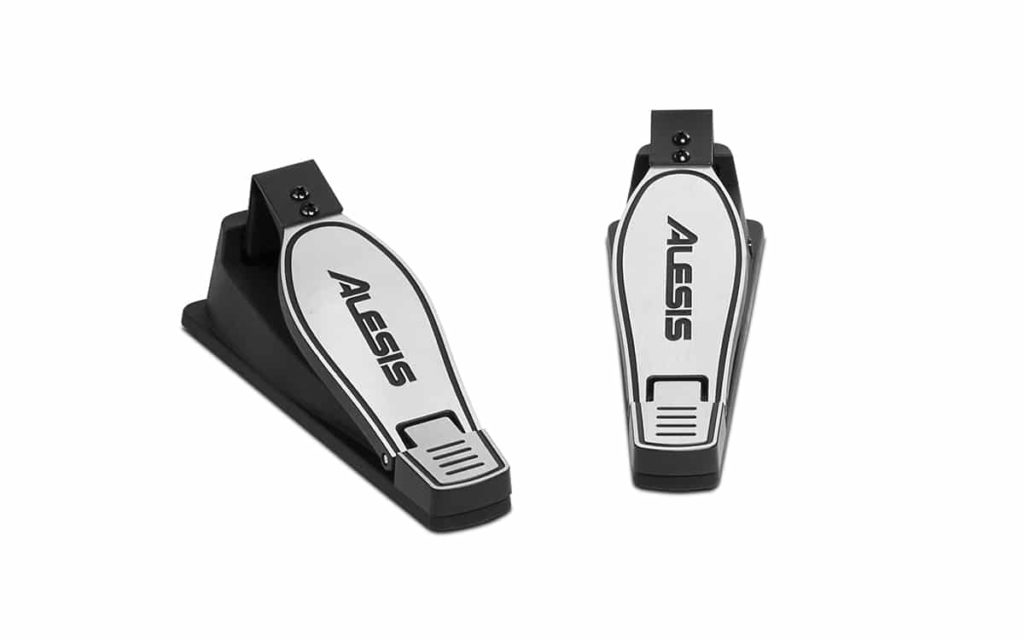
On the one hand, this is a plus, because you don’t need to buy a kick pedal.
The downside? The feel is way different than using a real kick drum pedal as we see on almost all electronic kits above this price point.
The hi-hat controller functions decently as a stand-less controller, similar to other Alesis kits like the Surge Mesh or Nitro Mesh. That said, it’s nowhere near the level of hi-hat controllers that utilize a stand.
The Module
The module of the Turbo Mesh couldn’t be more simple. There are just a few buttons with ten included preset kits. A total of 120 drum, cymbal, and percussion sounds fill the module.

Alesis provides 30 play-along backing tracks. Not only are they fun to play along with, but they also aid drummers’ creativity in writing parts.
Learning Tools
For young drummers learning, Alesis provides three great learning tools with the module — a metronome, drum coach, and 40 free lessons from Melodics (read my review on Melodics here).
The metronome features different time signatures and tempos from 30-280 BPM. Use a metronome while you practice if you aren’t already. It helps your timing more than you know.
The Drum Coach feature has five drum exercises that help build your stamina, work your groove, and improve your timing.
Auxiliary Input
Another benefit that’s standard on most modules today is the aux input. Using your phone, tablet, or laptop, you can easily jam along with your favorite songs from Spotify, or play along with lessons on YouTube.
USB/MIDI Functionality
For those into recording, the USB/MIDI jack on the back of the module lets you connect to your computer.
With the use of music software, it’s easy to record your performance and use VST Instruments. I suggest doing so, as the sounds included with the Turbo Mesh are not the greatest.
Let’s Talk About the Sounds
They’re not great, and honestly, I didn’t expect them to be the best. In my opinion, e kits often don’t have the best sounds.
For example, my kit, the Alesis Strike, doesn’t even have great sounds to my ears. That kit is 5x the price of the Turbo Mesh and has a much better module.
Emulating an acoustic kit with samples is no easy feat.
The ten included drum kits range from garage rock to jazz and world percussion. They work great for practicing, but in a gig setting, I doubt they will cut it.
The samples sound dull and lifeless to my ears. For practice, this shouldn’t be much of an issue.
Velocity-Sensitive Sampling
I believe the pads feature three-step velocity sampling. Tapping the drum plays a softer sample, hitting with medium velocity plays a medium sample, and cracking the drum plays a loud sample.
It’s very apparent on the snare drum, and you can hear it by playing softly to loud.
While this feature is nice, the transition between the velocity ranges is very noticeable.
Cymbal Velocities
Similar to the pads, the cymbals also feature different samples for the varying velocities. If you hit the bow of the cymbal hard, a bell sample plays.
It’s not intuitive, but it is one way to get bell sounds out of a dual-zone cymbal pad. It’s not my favorite feature.
I’d almost opt for eliminating the bell sound at that point. I doubt there’s a way to program that, given the limited module functionality.
Getting Around the Sounds
Despite the sounds lacking, there is a way to make the kit sounds amazing — drum VST instruments.
Software sample libraries like Addictive Drums 2 and EZ Drummer improve the sound of the kit dramatically, but you’ll need to use a computer and buy the software.
I suggest learning how to use drum VSTs — I promise you’ll appreciate the quality difference overall.
Wrapping Up
The Alesis Turbo Mesh Kit is a complete electronic drum set with mesh heads, MIDI over USB, and integrated practice tools making it perfect for the first-time young player.
The Turbo Mesh is an excellent and affordable e kit for beginning drummers. For kids asking for drums for the first time, you cannot go wrong.
An acoustic kit will always be loud and obnoxious to those in smaller homes, but the Turbo Mesh is perfect even in apartments.
If you want to go up a few steps, check out either the Surge Mesh or the Nitro Mesh from Alesis. There aren’t too many improvements, and for a first kit again, I’d start here.
What are your thoughts on the Alesis Turbo Mesh? Feel free to leave them down below in the comments. I’d love to hear from you. Thanks for reading.
Images provided from Alesis.com.
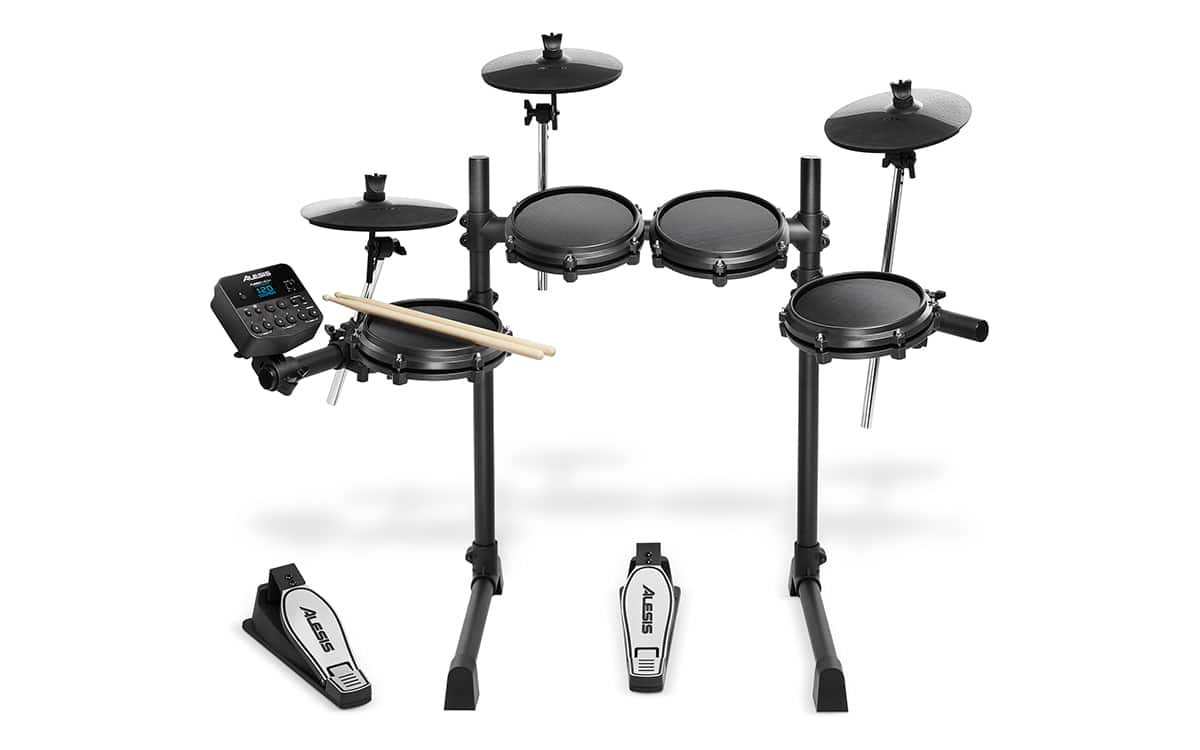

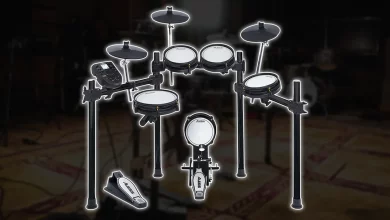
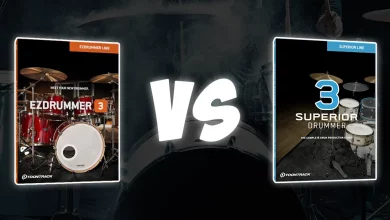
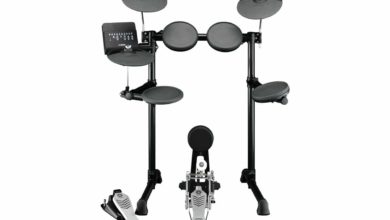
Does it come with headphones
0
This bundle includes headphones: https://www.amazon.com/Alesis-Electronic-Sticks-Headphones-Interconnect/dp/B07Y2GBDXQ/ref=as_li_ss_tl?keywords=alesis+turbo+mesh&qid=1585079032&sr=8-2&linkCode=ll1&tag=drummingreview1-20&linkId=a9f26edde3bad8b612fd890ef9015cce&language=en_US
0
do you need to get a speaker and amplifier for it to be heard or is this just headphones only? lookin to get this for my 7 y/o son.
0
Hi Kevin,
You can do either. The Turbo Mesh features a headphone jack and a stereo output for connecting to a speaker. I’d suggest using headphones—much simpler of a setup and less you’ll have to spend. Cheers!
0
Can the module send multiple track midi to my DAW? I’m looking for the least expensive electronic kit that can do that. From there I can replace sounds, etc.
0
Hey Anthony. Yes, you can use a USB cable to connect to your computer where you can record MIDI in your DAW. I don’t know if there’s a way for the MIDI to show up on separate channels, as when I’ve done this in the past, they record to one channel. From here, I split them up in Cubase. You most likely can, just have to setup all the MIDI channels correctly in the DAW prior to recording.
The Alesis Turbo Mesh user guide states it explicitly:
“In the case of the Turbo Drum Module, you can connect its USB port to a USB port on your
computer with a standard USB cable (sold separately). All MIDI messages will travel to and
from your computer over this connection.”
0
Thanks for the great review! A lot of great information here 🙂 Is there a way to know its size while fully assembled and the size while it’s folded? I’m thinking about getting one but the space in my place is pretty limited. I probably need to fold it and store it in my closet every time I play. It’s hard to find online about the size. Appreciated if there’s such info somewhere, especially the width and length while it’s folded. Thank you!
0
Hi Adler. Thanks for the nice words! The front posts of the rack measure to be about 25 inches (63.5 cm) long and the side rails measure about 29 inches (74 cm) long. So if you can measure a square out with those numbers, you should get some idea of how much space you’ll need for when the kit is set up.
You probably want to give yourself a bit of a buffer around each side, so you can get around the kit if need be (plus space for a drum throne to sit on). You can fold the side rails into the middle and adjust the pads out of the way for storage, but it’s a little tedious to do. You should be able to get it down to around 25″ x 16″ (63 x 41 cm) for storage (approximately).
Also, since the knobs are plastic, it might be a good idea to store the kit in its setup position, reducing strain and wear on the hardware. I can’t say that they are prone to breaking over time, but I like to err on the safe side.
0
Thanks for the quick reply. It’s actually smaller than I expected, which is good. I’ll get one and see how it goes. Thanks again!
0
Just bought one of these and it is an impressively well designed, solid kit for the price. I’m just using it as a silent practice kit so not too concerned about sensational sounds and it very quickly became quite intuitive despite the small head sizes. Pedals tend to be a bit hit or miss – faster movements can sometimes not register. Biggest gripe is the ‘rubber’ cymbals that, when struck rhythmically tend to be somewhat inaudible – in fact the actual sound of sticks on the surfaces tends to be heard more than the sampled sounds. Perhaps I need to invest in a pair of noise-cancelling headphones! All in all, however, I’m pretty happy.
0
Thanks for the feedback on your new kit, David. I like my ATH-M50x headphones, but they’re not really noise cancelling. If you want to really reduce external noise, check out the GK Ultraphones—they’re incredible sounding.
0
This review matches my experience. I bought this on impulse as it was so darned cheap, and I needed something cheap to fill floor space in my office/studio. My biggest gripe is the cymbal volume, especially the high hat. It’s completely buried by reverb from the drums so you can barely hear them. That leads to my other gripe, the reverb is so overbearing on all the drum sounds, it’s really distracting.
0
Is there a way to properly fix this? To soldier a resistor in parallel inside a cymbal might help, but that’s not something I’d like to do on a brand new drum set.
0
Hi Nick,
I noticed that the cymbals sound a lot softer than the drums. Can this problem be solved?
Thanks mate
0
I am interested about the cymbal response that the others above have raised, and what Nick’s thoughts are. Sometimes, you just have to be cognizant of where you are getting the cymbal. Needed to try to center over the sensor in e-cymbals (very different than traditional acoustic cymbals).
Also, a new question: how does this compare to the “Total Mesh” kit. Only things I see, without doing an in depth comparison, is that the pedals are very small, but it comes with a throne and I like the black/white look of the pads better than the all-black Turbo. Difference in $ is only about $30, so I am guessing the “Total” is just intended to be an all in one kit for kids. I’d rather have the better pedals, even for my kids to learn. Thoughts Nick or anyone who may have the Total kit? Thanks…
0
Hi there,
I’m a new drummer and this kit was a great price and easy to set up. The main problem I’m having is the volume, of lack of it! Do you know if there is a way to increase the sound as even on the highest setting, I can mainly hear the sound of my sticks hitting the kit rather than the sound of the drums through the headphones.
Is this a common problem? What would you recommend?
Many thanks.
0
Hi Ella,
Thanks for the comment. This is common among e-drum modules. There usually is a way adjust the output level, but on the Turbo Mesh, this is not a possibility.
What kind of headphones are you using? Certain headphones have different impedance levels which can affect the volume output of the module.
Other users have recommended the Vic Firth Isolation headphones, but I wouldn’t go that route myself for electronic drums, honestly. They’re a little too bulky for a kit that doesn’t require sound isolation. I like my Audio Technica ATH-M50x pair, but they’re a little expensive.
0
Depending on the size of the headphones you can grab a set of “gun shot” or workers iso headmuffs. I done this with my custom in-ears and it works great, and is way cheaper then the vic firth or similar headphones!
0
Can a turbo mesh kit be hooked up to a alesis strikepro? Saw a Alesis video saying a strike pro can be hooked up to any Alesis e-drum?
0
Possibly, but you’ll need to use the Aux in on the Strike Module and the left/right output of the Turbo Mesh module. The other option is to get a USB MIDI host, like the midiplus, and then use traditional MIDI cables to connect to the Strike Pro module.
0
Hi Nick, Great review! You just “saved” me some money. I’m in the market and almost bought this kit, read the review and while I appreciate it has its applications I’m now looking for something a little better. The issues mentioned of concern to me are the limited velocity sensitivity, unrealistic kick feel, and volume issues mentioned by others. Any recommendations for other kits that will show improvement in these areas. Of course trying not to spend any more than I have to 🙂
Thanks,
Guy
0
Hard to argue with much of this. I’ve had this kit for a year now as something to play, and keep my skills up while apartment living. The small setup makes me feel like I’m playing inside a telephone booth (Ask your parents) which is rather subduing for a drummer. The drum heads are small, so it rewards precision. It doesn’t make the greatest sounds, but for kicking around the apartment they work just fine. Really not a fan of the small drum heads though, at least give me a bigger floor tom head.
Overall a decent kit for your kid that wants some drums without giving you constant pounding you get from a traditional set as your child skill set improves, but you’ll make them quite happy. Not gig worthy even at a HS prom dance though. As you stated E-kits are hard to make perfect, nothing beats the old school real kits. I’m still kicking myself for selling off my 7pc Pearl set oh so many years ago.
0
I don’t know if you’re still reading replies here but I noticed you keep mentioning kids. Is this set also good enough for a 31-year old looking to get into drumming as well?
0
Hey Geno. The Turbo Mesh is probably going to be too small, and learning with a foot pedal kick isn’t as ideal as learning with a traditional kick drum pad and real pedal. I’d save a little for either the Alesis Surge or Roland’s TD-1MK.
0
Hi Nick,
I was thinking of getting one of these to make it easy for guest drummers to join an electric guitarist and I (electric bass) at casual basement jams. We’d use a spare amp. Do you think this could work out volume-wise? The comments above are disuading me. No club, no audience, but we get a bit loud. Thanks so much for your thoughts!
0
I think it could work, but realistically, it’s very small. So it may not be quite as fun and a bit cramped. But it would 100% work!
0